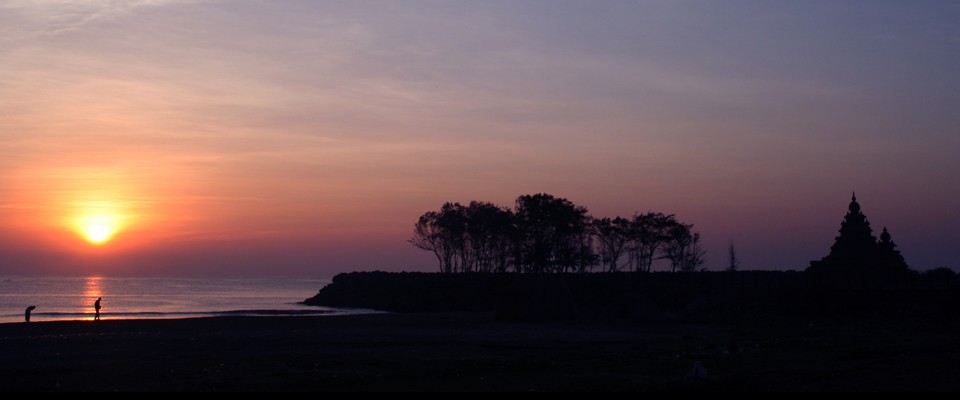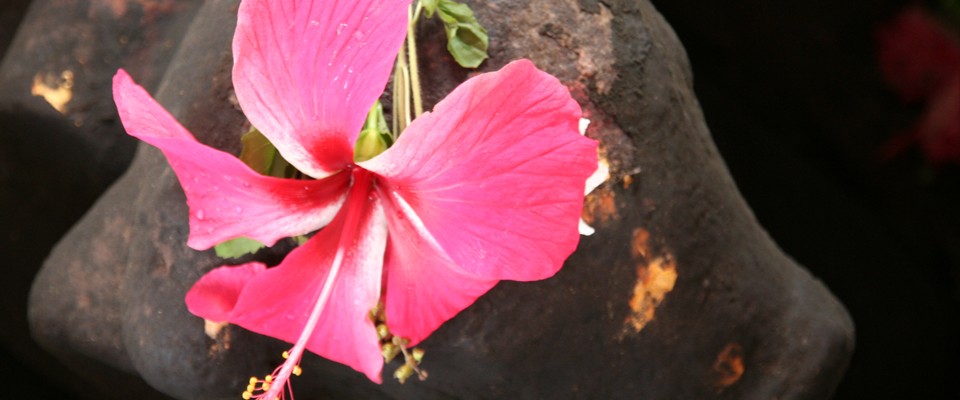Mahābalipuram, nowadays Mamallapuram, « the city of Mahā Bali », is a small city in Tamil Nadu situated 60 km south of Chennai (Madras) on the Coromandel coast. This charming little town is worldwide known for its « Shore Temple » by the ocean, near a large sand beach, and for he fascinating remains dating from the period of the Pallavas, between the 5th and 7th centuries.
This is where Jean-Claude has been teaching Ashtanga Yoga for twenty years, twice a year. Mahābalipuram hosts every year, from the end of December till the end of January an important « Indian Classical Dance Festival ». It is an important archaeological site designated by the Unesco as a world Heritage site since 1985. Non-Indian tourists pay only one entrance fee, equivalent to 5 dollars, for visiting all the monuments.
- The Descent of the Ganges or Arjuna’s Penance, magnificent low relief 27 m long by 9 m high, sculpted on a huge granite rock, illustrating the legend of the Descent of the celestial Ganges on Earth, by the hair of the god Shiva. You will see Arjuna, in a Yoga posture, surrendering himself to a very harsh penance lasting for a thousand years. Are also present: Gods, Goddesses, aquatic animals as nāga and nāginī…
The mandapa(s), on top of a hill count, eight small « mandapam » sanctuaries, sheltering beautiful statues, two of which are unfinished.
- Krishna’s mandapa is one of the most beautiful. You see Lord Krishna lifting with one hand the Mount Govardhana to protect the villagers and the cows from the thunderstorm, triggered by the anger of the God Indra.
- Le mandapa de Shiva Īśvara « le Seigneur suprême »
- The five Rathas (Pancha Ratha) are large wooden procession chariots. In Mahabalipuram, this name is used to designate monolithic temples carved in the shape of buildings, inside the rock.
- Ratha of Draupadi, dedicated to Durgâ
- Arjuna’s Ratha
- Nakula’s Ratha
- Bhima’s Ratha
- Yudishtara’s Ratha
- Krishna’s Butter Ball, a large round shaped granite rock that seems to be in unstable balance. According to a legend Krishnâ, as a child, stole a butterball.
- The Tiger Cave situated a few kilometres (4km) north of Mahābalipuram, on the road to Madras, beside the sea, carved inside a large rock. The site is called Saluvankuppam. Coconut trees shadow the site; it is preferable to visit at sunrise or at sunset to enjoy a magical light. The cave was originally dedicated to the Goddess Durgâ. It is a monument dating from the period of the Pallavas.
- The Temple of Īshvara is fully carved in the rock.
- A small museum, with a friendly staff, shelters statues, paintings and the result of archaeological excavations; open daily.

